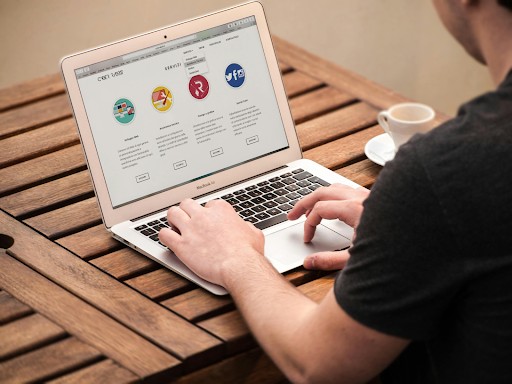I’ll admit it—when I first started in the design world, I didn’t get the whole “white label” thing. It sounded a little too… corporate for my taste, like something you’d find in the back office of a big company.
But as the years passed, I realized how much power it holds for freelancers and agencies alike. Let’s face it, in the fast-paced world of web design, white label web design is that secret ingredient that makes your life easier and your services look even more polished.
Trust me, it’s a game-changer.
What Exactly is White Label Web Design?
At its core, white label web design refers to creating websites for clients under your own brand, without the end client ever knowing who the original creators are. It’s like you’re the mastermind behind the scenes, while the work is passed off as your own. It’s commonly used by agencies that want to offer more services without hiring a full in-house team of designers.
You can source the work from a third-party provider and rebrand it as your own. Pretty cool, right? So, instead of struggling with every single project, you can outsource the design and still deliver top-tier work that reflects well on your business.
But let’s dig deeper—why should you care about it, and how can you make it work for you?
How Can White Label Web Design Help My Agency?

Let’s break it down. You’re running an agency, juggling a million things—client calls, deadlines, content creation, the list goes on. Now, what happens when a client asks for a website overhaul or a fresh new design? The pressure’s on, right?
If you’re a small agency or solo entrepreneur, you might not have the capacity to take on every design project yourself. That’s where white label design comes in.
You can offer a wide range of services to your clients, including design, development, SEO optimization, and content creation, all while partnering with a third-party provider who does the heavy lifting. You get to act as the project manager, maintaining your brand’s image, while the technical details are taken care of by someone else.
It’s like having your own creative team without the overhead.
What’s the Deal with White Label Products on Websites?

Okay, let’s take it a step further. A white label product website is a platform where the website itself is branded under your business but created by a third-party provider. For example, if you’re running an e-commerce website and you don’t have the resources to build the back-end functionality or design, you might use a white label platform that provides all those services under your brand.
Think about it as buying a product, but instead of slapping a logo on it, you get to make it feel completely “yours” to your audience. The client never sees the original maker; they only know you as the expert who delivered the beautiful, functional website.
So, What Is a White Label Design System?
A white label design system is a comprehensive set of reusable design assets and guidelines that can be customized for different projects while maintaining consistency.
This includes color schemes, typography, layouts, and UI components like buttons, forms, and cards. Having a white label design system at your disposal means you can speed up the design process, keep your projects on-brand, and maintain quality across all your deliverables.
It’s a lifesaver for agencies that work on multiple projects at once or for designers handling high volumes of work.
Instead of reinventing the wheel for each new website, you have a framework that’s both flexible and scalable.
What’s the Deal with a White Label URL?

If you’re wondering about white label URLs, here’s the scoop: a white label URL is simply the web address you use for your client’s site, which can be rebranded or masked to reflect your own domain.
For example, if you’re working on a site for a client and you don’t want them to see your design provider’s branding in the URL, you can mask it with your own domain name.
It’s just one more way to ensure that everything feels cohesive and professionally presented to your client.
How to Make the Most of White Label Web Design
Alright, let’s talk strategy. If you’re ready to incorporate white label web design into your services, here’s how you can maximize its potential:
- Find a Reliable White Label Partner: Not all white label design providers are created equal. Look for a partner that aligns with your quality standards and can provide excellent customer support. You’ll want to ensure that their design capabilities align with your brand’s vision.
- Set Clear Expectations with Your Clients: While you’re rebranding someone else’s work, make sure you communicate with your clients about the process. Transparency is key to maintaining trust, and the last thing you want is for them to feel like they’ve been left out of the loop.
- Customize to Make It Yours: Even though you’re outsourcing the design, don’t just slap a generic template onto your client’s website. Customize it! Add your own personal touch, tweak the color schemes, and adjust the layout so it truly reflects your brand’s aesthetic.
- Stay Hands-On: While you’re outsourcing the heavy lifting, stay involved in the project. Be the point of contact for your clients, and ensure that the design meets their expectations. Your role is to manage the project and provide feedback to your white label provider to make sure the end product is on point.
FAQ: All Your Burning White Label Questions Answered
1. What’s the difference between white label and private label web design?
Great question! The terms are often used interchangeably, but there’s a subtle difference. White label web design involves creating products or services that are rebranded under your name, with no mention of the original designer.
Private label, on the other hand, may involve more customization and exclusivity with fewer restrictions on branding. Essentially, white labeling is more standardized.
2. How can I ensure the quality of white label work?
You should establish clear communication with your white label provider and set specific quality guidelines. Request regular updates, and don’t be afraid to ask for revisions if something isn’t quite right. You’re the one putting your brand name on the line, so quality control is key.
3. Is white label web design expensive?
It can be, depending on the complexity of the projects and the provider you choose. However, it’s often much more affordable than hiring an entire in-house team, which makes it a great option for agencies looking to scale without significant upfront costs.
Be sure to compare pricing and find a provider that offers a balance of quality and cost-effectiveness.
Final Scoop Before You Jump In
If you’re serious about scaling your web design services without getting bogged down by every little detail, white label web design is your ticket to success. It’s the secret weapon that allows you to offer high-quality, branded websites while keeping your overhead low.
Just remember, it’s all about maintaining that personal touch, staying in the driver’s seat of the client relationship, and ensuring that your brand’s voice shines through—no matter who’s doing the actual designing.
So go ahead, embrace the magic of white label web design, and start offering more than you ever thought possible.
Your clients won’t know what hit ‘em—and they’ll love you for it.
 aspectswebdesign.com
aspectswebdesign.com
